*This post may have affiliate links, which means I may receive commissions if you choose to purchase through links I provide (at no extra cost to you). As an Amazon Associate I earn from qualifying purchases. Please read my disclaimer for additional details..
Table of Contents
What are Varroa Mites?
Varroa mites are tiny red-brown parasites that need honey bees as hosts to survive and multiply.
They are external parasites whose entire life cycle occurs within the honey-bee colony. They mainly feed on the larvae and pupae in the brood, while the adult females feed on the adult bees’ hemolymph.
Their survival mainly depends on the presence of brood since this is where they primarily get their food and a platform to reproduce.

Depending on the presence of brood, the varroa mites’ lifespan can vary from around 25 days to 5 months.
During summer, varroa mites may survive for 2–3 months and complete 3 – 4 breeding cycles if brood is present.
Adult females can get out of the brood and feed on the adult bees for up to three months. However, they can survive for up to five days without food.
How do They Affect Bees?
Since varroa mites mainly feed and reproduce on the larvae and pupae in a developing brood, they greatly affect the most crucial development stages for a bee, subsequently causing malformation and weakening of honey bees and transmission of numerous viruses.
Let’s take a closer look at the impacts of their presence in a honey bee colony on the individual bees and the colony as a whole.
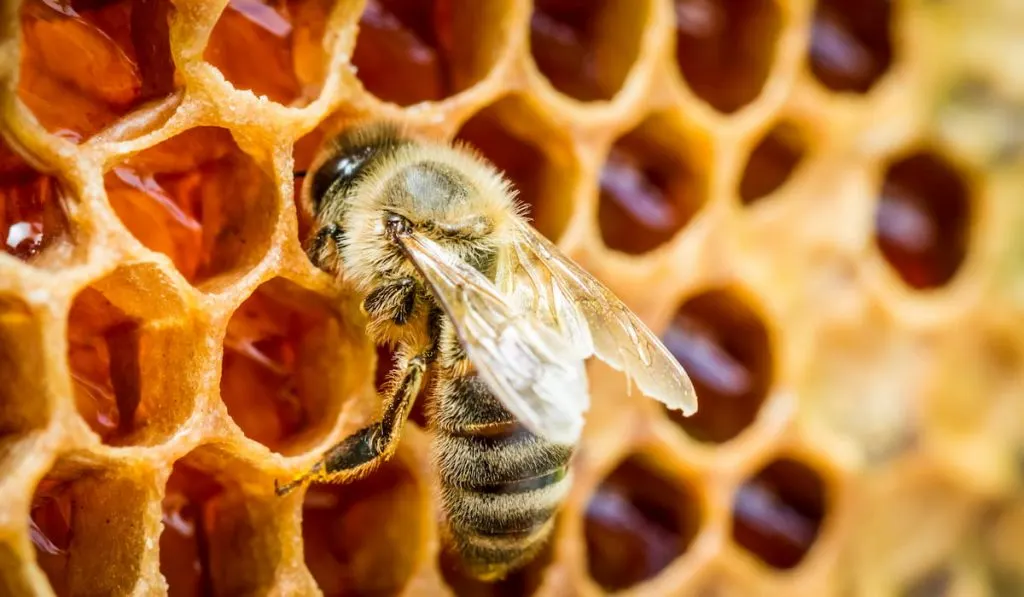
Effects on Individual Bees
Bees infected with varroa mites during their early development stages may die during the pupal stage of development. They will remain in the brood till the adult bees remove it, but most generally survive to emerge.
However, as adults, they may depict signs of physical or physiological harm.
In the brood, the varroa mites feed on the hemolymph of the developing brood, considerably reducing the weight of the hatching bee. Depending on the number of mites in the colony, the weight loss will vary.
However, even a single female varroa mite in a brood cell may cause a body weight loss of 7% – 19% for hatching bees, and as a result, the bee’s flight ability is significantly reduced.
The loss of hemolymph also affects the bees’ ability to feed growing larvae in the brood because of the reduced hypopharyngeal glands responsible for producing royal jelly.
Although they may enter the foraging stage sooner, bees parasitized during their development stages have a decreased lifespan.
They also develop a poor capacity to navigate, signified by their non-associated learning abilities, a lower rate of return to the colony, and prolonged absences.
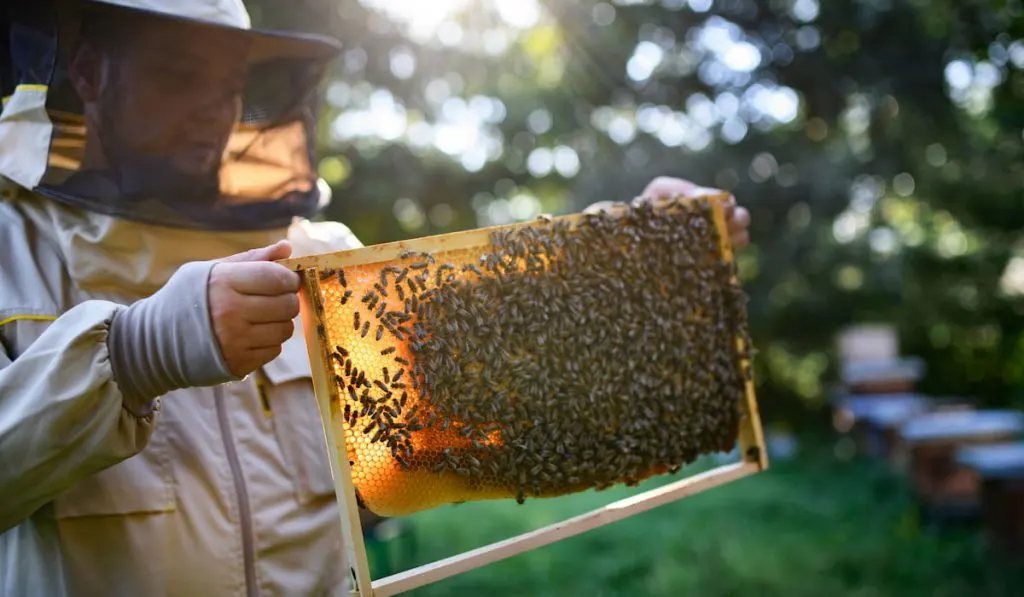
Viral transmissions are also a significant concern associated with varroa mites feeding on the brood and adult honey bees.
Varroa mites act as efficient vectors of various viruses since they feed on the hemolymph of both the broods and the adult bees.
Also, due to varroa feeding, the bees’ immune systems are weakened, making them more susceptible to viruses and other pests like Nosema spores and the Tracheal mite.
Symptoms for this may include malformed and shriveled legs, wings, and abdomens.
Many honey bee viruses are considered silent because they may be there but in low levels, but their presence is directly linked to the presence of the varroa mites.
It should be noted that it is the virus, not the mites that cause most of the harm that bees suffer while hosting the mites.
Viruses spread across a colony either vertically or horizontally. Vertical transmission occurs when an infected parent bee (queen bee or drone) passes the virus to its eggs, which are then affected from their early development stages.
Horizontal infection occurs when infected bees spread the viruses to uninfected bees, typically through contamination of food material or by elimination of waste.
Virus particles develop inside the varroa mite’s mouthparts, injected either to the developing brood or an adult bee, making varroa mites the carriers for vertical and horizontal infections.
Therefore, it is a result of multiple viral infections rather than the direct parasitation that honey bee colonies eventually collapse.

Effects on a Colony
No apparent harm befalls a colony with low varroa mite infestation, but as the mite population grows, it will ultimately affect individual bees and weaken the colony as a whole.
It may take 3-4 years for the mite population to build up. Still, it will gradually lead to a decrease in the honey bee population, the supersedure of queen bees, and eventually the colony’s collapse.
Severe varroa mite infestation on a colony delays replacement of old adult bees with healthy young ones.
This gives room for the potential spread of bee viruses which eventually lead to the colony collapse because of poor feeding and brood raising, and weak colony defense.
The colony will also suffer a reduced reproductive capacity since the parasitized drones have reduced probabilities of reproduction, leading to fewer swarms in the colony.
Parasitic mite syndrome (PMS) is a set of symptoms that a bee colony shows on the verge of collapse when infested by the varroa mites. These include either scattered, balled, or neglected and dead developing broods.
In contrast, signs in adult bees include crawling or even crippled individuals. In contrast, others are dead and partly eaten through and are stuck in a cell after the brood cycle, sunken and eaten cappings, queens have supersedure, discoloration of larvae, and drastic decline in the bee population.
During the early stages of infestation, honey production and pollination are unaffected. Still, as the mite population grows to extreme levels, the colony weakens, leading to a low honey output and pollination activities.
Mite populations will always grow in a colony to the point of threatening the colony’s survival unless treated to decrease or eradicate the intruding mites.

Identification and Detection of Varroa Mites
Varroa mites are external parasites that depend on bees as their hosts. The adult female mites are round, flat, and red-brown and are found on adult honey bees, larvae, and pupae.
They are approximately 1.1 mm in length and 1.5 mm in width. Young and adult male varroa mites are found on larvae and pupae and are paler in color and smaller than female adults.
On detecting varroa mites, there are a couple of techniques to use, and each method has its own set of benefits and drawbacks. However, depending on the suitability, some techniques are more accurate than others.
Therefore, when choosing a method to use, it is critical to go for a simple, highly sensitive method that doesn’t take long to have results, doesn’t need repeated trips to the hive, and is highly dependable.
Common techniques for varroa mite detection include sugar shaking, drone uncapping, alcohol washing, colony examination, and sticky mat examination.
However, varroa mites are not evenly distributed in the hive, and their distribution varies according to the season. Therefore, varroa sampling should be done at different times of the year.
Alcohol washing and sugar shaking are extremely precise methods used to sample the mites on bees, especially when there is no brood in the hive.
However, there is always a lot of brood in the hive during the spring and early summer, and the mites are more likely to be in the brood than on adult bees.
Drone uncapping is, therefore, more suitable for this time.
Adult honey bees collected from the brood nest are twice as likely to have varroa mites on them than bees collected from honey supers. To get a fair representation when sampling, it is recommended to collect bees from at least three brood frames.
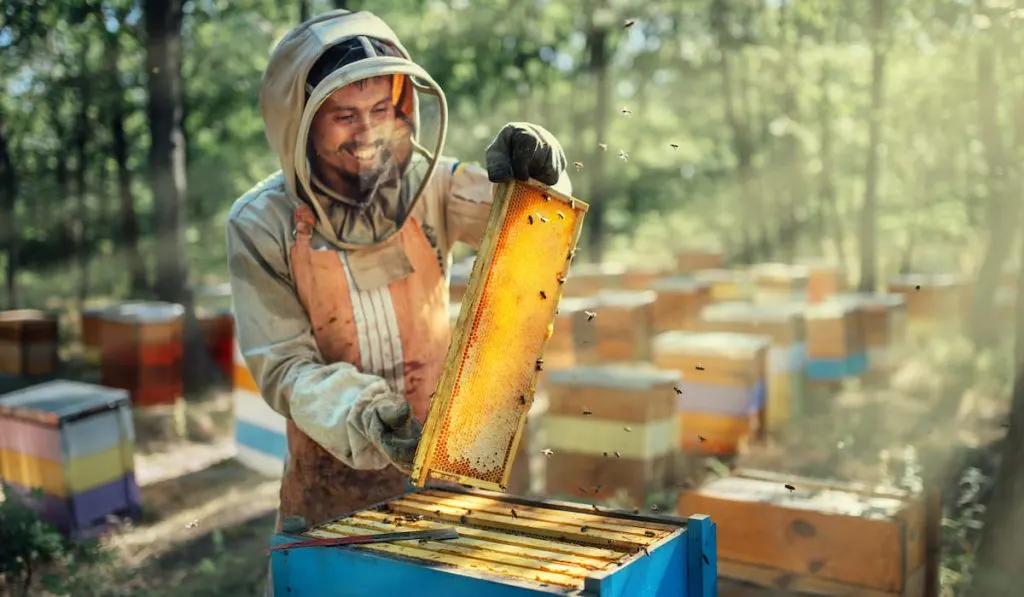
What to Use to Treat Varroa Mites
Varroa mite levels in bee colonies must be monitored to determine the need for and the kind of treatment appropriate for the colony.
Using the detection methods like alcohol washes, the mean abundance of mites (number of mites per 100 bees) is often measured on a regular basis to determine whether the number of mites on adult bees has reached a threshold.
For apiaries with a high number of colonies, sampling 20% of the colonies is enough to determine the mite population.
When buying bees, either from a local beekeeper or from a trusted internet retailer, your new packages may come with undesired mites, and it is good to treat them regularly.
Miticides are specifically for curbing mites and are intended to not kill bees.
However, some may be harmful to the colony. Therefore, using a less harmful option like a combination of sugar syrup and oxalic acid, an organic chemical, is a better option to treat new bees.
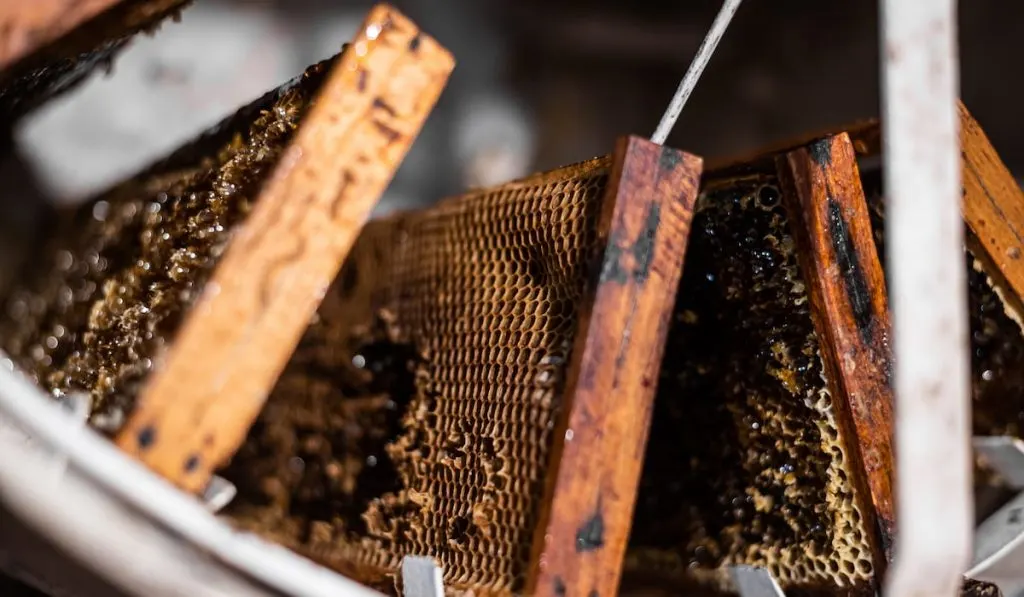
Types of Varroa Mite Treatments
Bio-pesticides
Bio-pesticides are naturally occurring organisms and their by-products, and a number of them have been approved for use in honey bee colonies to combat varroa mites.
Many bio-pesticides have effectiveness comparable to chemical pesticides. However, how these chemicals are delivered may vary significantly, and knowing these variations is critical for varroa control effectiveness.
Formic acid is a natural substance that is used to make other chemicals. The United States Environmental Protection Agency (EPA) has approved using this substance to manage varroa mites. It is the only chemical pesticide that may be used in organic honey production.
There are various distribution techniques for formic acids, such as putting pads soaked with liquid formic acid on top of the hive.
However, the product cannot be used during a honey flow or when harvesting, and the daily maximum temperatures must be between 50°F and 79°F.
If witnessed, higher temperatures during the first week of treatment require immediate attention and withdrawal of the chemical from the hive to avoid substantial loss of brood and adult bees.
Smaller bee colonies may also be overwhelmed by the fumes. Furthermore, the substance is highly toxic to humans so it requires care and caution when administering to avoid exposure.
Apilife VAR is also an organic brand used to curb varroa mites. It contains a mixture of the essential oils thymol, eucalyptol, and menthol and has proven effective against varroa mites between 65% and 97% in many tests.
This product is administered to the bees by a tablet, which must be split into four pieces and put between the brood chambers at the four corners of the hive. To prevent the bees from eating and removing the tablets from the hive too soon, each piece must be encased with wire mesh.
For maximum efficacy, new pills must be taken once a week for three weeks. Apilife VAR is only effective at temperatures between 60°F and 90°F.
However, the substance can cause bee brood mortality and is, therefore, best used in the autumn when brood rearing naturally decreases.
Even though Apilife VAR is an organic pesticide, it is a restricted-use chemical only available to people who have a valid Pesticide Applicators License.
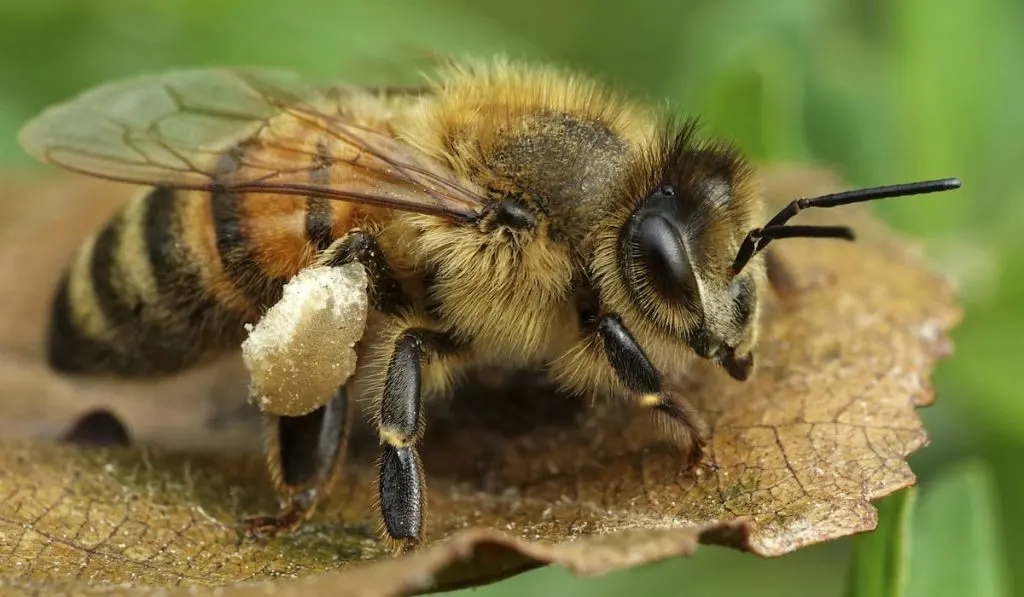
Chemical Treatments (Synthetic Pesticide)
Synthetic pesticides are administered to a colony through insertion of plastic strips impregnated with the active chemical inside the hive in traditional varroa control methods.
While these treatments have historically given high levels of control, resistance to these pesticides is becoming more common, making them less dependable.
Apistan, the brand name for fluvalinate, was one of the first pesticides to be approved by the EPA to treat varroa mites. It comes in the form of a plastic strip impregnated with the active insecticide, which is strung between the frames of a hive immediately outside the brood nest.
Fluvalinate is a contact insecticide that, when applied correctly, may kill varroa mites completely.
It should, however, be applied in rotation with other treatments to avoid the development of resistance by the mites and guarantee its effectiveness.
Apivar is a relatively new mite control solution for beekeepers and operates much like Apistan, but the mites have not yet acquired a resistance.
Conclusion
Whether in small or large numbers, varroa mites are highly destructive to your bee colony.
As explained in the article, the mites themselves might not be directly responsible for the decline and eventual collapse of the bee colony.
However, it is through their activities that the bee colonies can become significantly disadvantaged and eventually collapses.
Resources
- https://beehealth.bayer.us/learn-about-pollinator-health/stressors/varroa-mites
- https://www.beekeepingfornewbies.com/best-varroa-mite-treatment/
- https://www.extension.iastate.edu/smallfarms/managing-varroa-mites-honey-bee-colonies
- https://beekeepclub.com/best-treatment-for-varroa-mites/
- https://beeaware.org.au/archive-pest/varroa-mites/#ad-image-0
- https://extension.psu.edu/methods-to-control-varroa-mites-an-integrated-pest-management-approach
- https://www.pnas.org/content/116/5/1792
